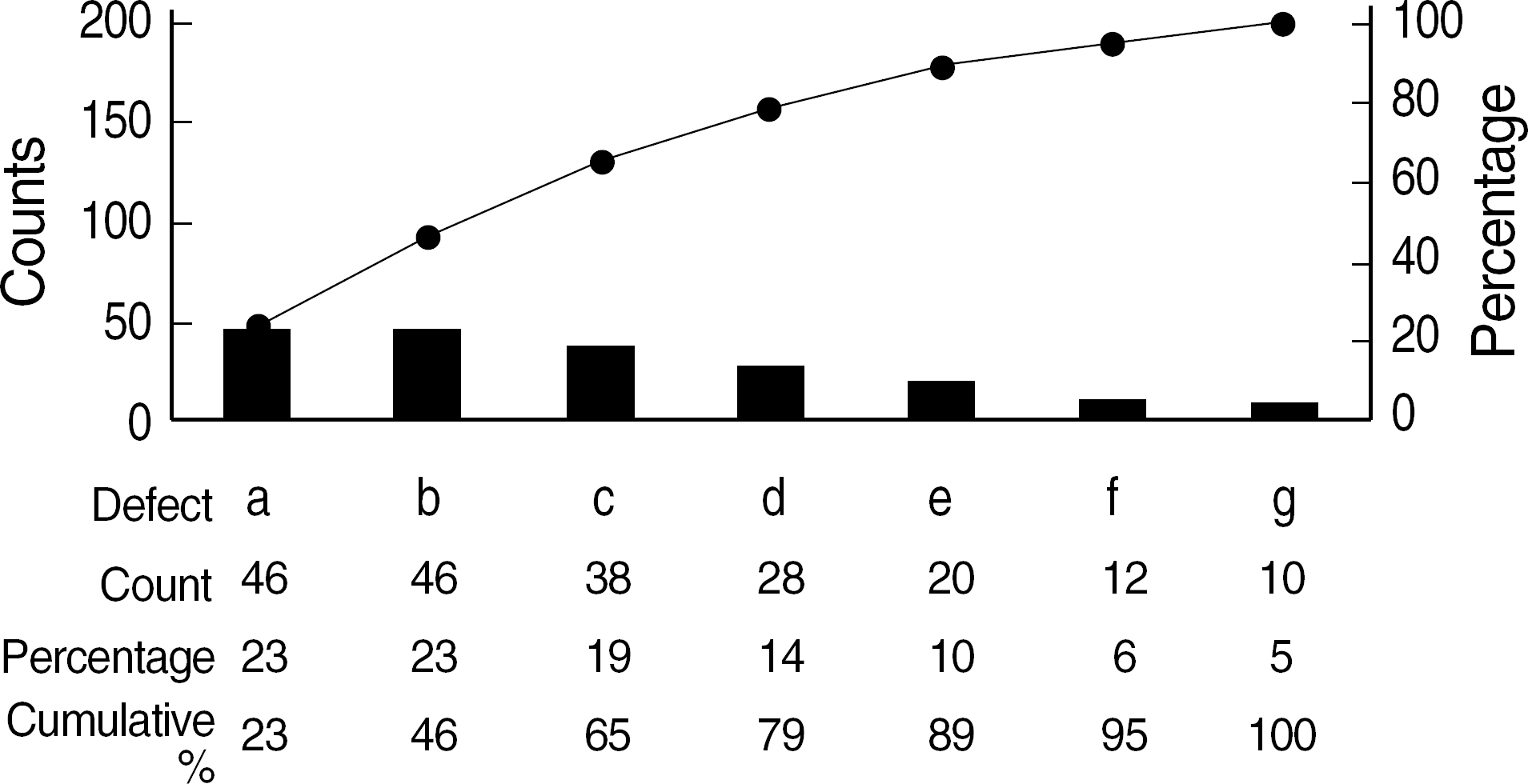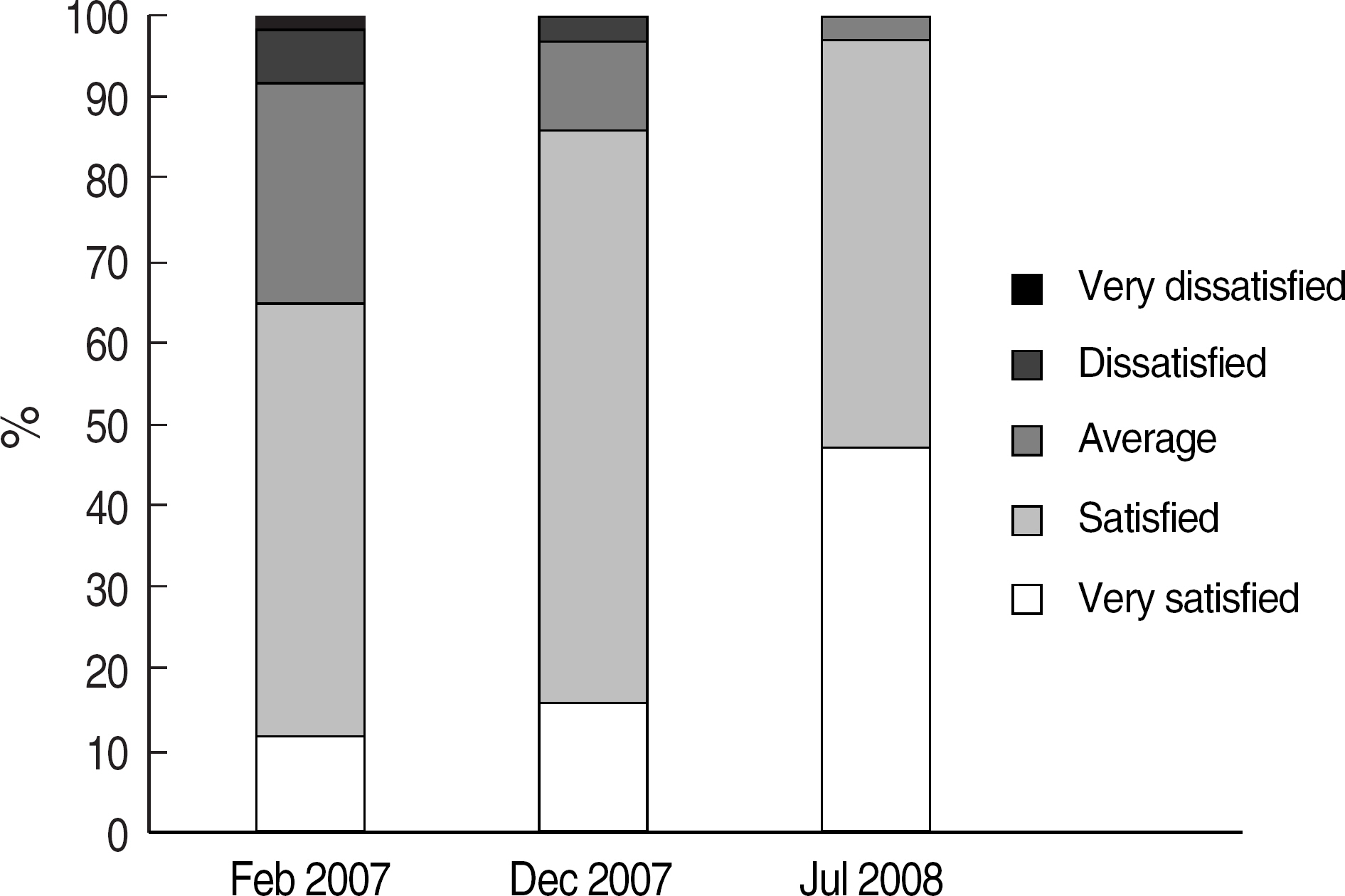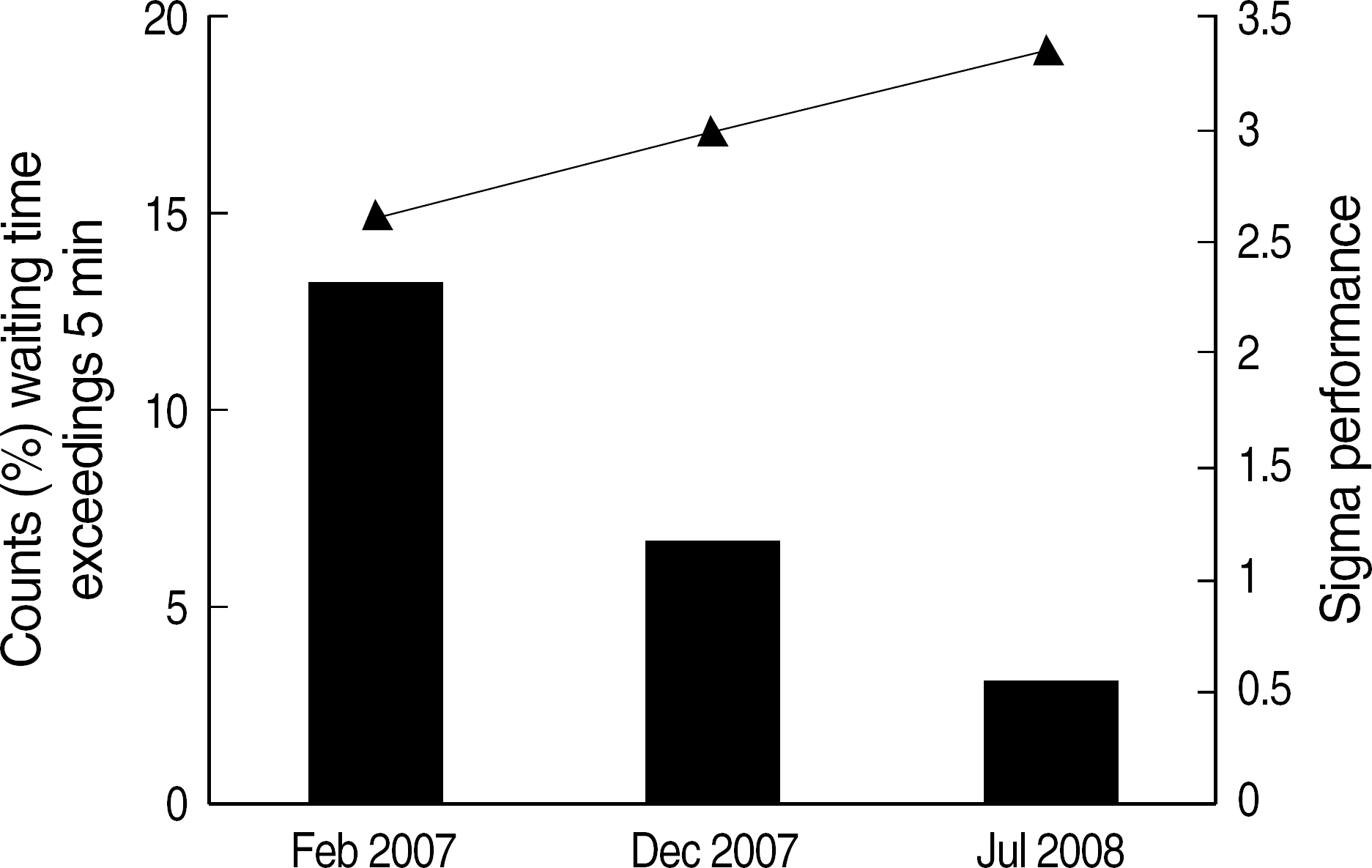Korean J Lab Med.
2009 Apr;29(2):171-177. 10.3343/kjlm.2009.29.2.171.
Reducing Patient Waiting Time for the Outpatient Phlebotomy Service Using Six Sigma
- Affiliations
-
- 1Department of Clinical Pathology, Kyungpook National University School of Medicine, Daegu, Korea. leewk@knu.ac.kr
- KMID: 854982
- DOI: http://doi.org/10.3343/kjlm.2009.29.2.171
Abstract
- BACKGROUND
One of the challenging issues of the outpatient phlebotomy services at most hospitals is that patients have a long wait. The outpatient phlebotomy team of Kyungpook National University Hospital applied six sigma breakthrough methodologies to reduce the patient waiting time. METHODS: The DMAIC (Define, Measure, Analyze, Improve, and Control) model was employed to approach the project. Two hundred patients visiting the outpatient phlebotomy section were asked to answer the questionnaires at inception of the study to ascertain root causes. After correction, we surveyed 285 patients for same questionnaires again to follow-up the effects. RESULTS: A defect was defined as extending patient waiting time so long and at the beginning of the project, the performance level was 2.61 sigma. Using fishbone diagram, all the possible reasons for extending patient waiting time were captured, and among them, 16 causes were proven to be statistically significant. Improvement plans including a new receptionist, automatic specimen transport system, and adding one phlebotomist were put into practice. As a result, the number of patients waited more than 5 min significantly decreased, and the performance level reached 3.0 sigma in December 2007 and finally 3.35 sigma in July 2008. CONCLUSIONS: Applying the six sigma, the performance level of waiting times for blood drawing exceeding five minutes were improved from 2.61 sigma to 3.35 sigma.
Keyword
MeSH Terms
Figure
Reference
-
1.Harry M, Schroeder R, editors. Six sigma: the breakthrough management strategy revolutionizing the world's top corporations. 1st ed.New York: Doubleday Business;2000. p. 299.2.Westgard JO. Six sigma quality: performance metrics vs. laboratory myths. AACC presentation. 2002. http://www.aacc.org/events/expert_access/2002/westgard/Pages/presentation.aspx.3.Westgard JO., Klee GG. Quality management. Burtis CA, Ashwood ER, editors. , eds.Tietz textbook of clinical chemistry and molecular diagnostics. 4th ed.Philadelphia: Elsevier and Saunders;2006. p. 488–90.4.Gras JM., Philippe M. Application of the six sigma concept in clinical laboratories: a review. Clin Chem Lab Med. 2007. 45:789–96.
Article5.Riebling NB., Tria L. Laboratory toolbox for process improvement: six sigma at north shore-long island jewish health system. Lab Med. 2008. 39:7–14.6.Nevalainen D., Berte L., Kraft C., Leigh E., Picaso L., Morgan T. Evaluating laboratory performance on quality indicator with the six sigma scale. Arch Pathol Lab Med. 2000. 124:516–9.7.Westgard JO., Westgard SA. The quality of laboratory testing today: an assessment of σ metrics for analytical quality using performance data from proficiency testing surveys and the CLIA criteria for acceptable performance. Am J Clin Pathol. 2006. 125:343–53.8.Simmons JC. Using Six Sigma to make a difference in health care quality. Qual Lett Healthc Lead. 2002. 14:2–10.9.Riebling N., Tria L. Six sigma project reduces analytical errors in an automated lab. MLO Med Lab Obs. 2005. 37:22–3.10.Jackson J., Woeste LA. Using lean six sigma to reduce patient wait times. Lab Med. 2008. 39:134–6.
Article
- Full Text Links
- Actions
-
Cited
- CITED
-
- Close
- Share
- Similar articles
-
- A Study on Model for Decreasing an Outpatient Waiting Time
- The Relationships among Waiting Time, Patient's Satisfaction, and Revisiting Intention of Outpatients in General Hospital
- Application of Queueing Theory to the Analysis of Changes in Outpatients' Waiting Times in Hospitals Introducing EMR
- The Improvement of Hospital Food Service in Quality and Customer Satisfaction by Using 6-sigma Strategy
- Efficiency of an Automated Reception and Turnaround Time Management System for the Phlebotomy Room





